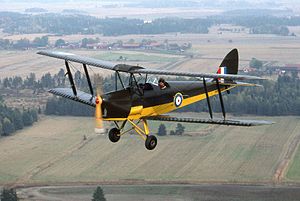
 |
|
|||||||
| IL-2 Sturmovik: Cliffs of Dover Latest instalment in the acclaimed IL-2 Sturmovik series from award-winning developer Maddox Games. |
 |
|
|
Thread Tools | Display Modes |
|
|
|
#1
|
|||
|
|||
|
And whats the easiest plane to fly/learn 109/spit etc.
|
|
#2
|
|||
|
|||
|
109E4. It has automatic pitch, the earlier 109's do not.
Spits require continual adjustment of trim, 109's do not. Also current models of Spit and Hurri are very prone to issues with backfiring, overheating etc. at certain prop pitch settings and boost levels. They require a continual monitoring of instruments. |
|
#3
|
|||
|
|||
|
I dont think either spit or 109 is easiest, just different. Dont learn with auto pitch, you will regret it.
Look at my other videos too, plenty of 109 stuff there. Here is the only patch you need. http://forum.1cpublishing.eu/showthread.php?t=34902 |
|
#4
|
|||
|
|||
|
You should always start out learning to fly in this.

|
|
#5
|
|||
|
|||
|
Farber's video of the 109 is great. For the Spitfire or Hurricane startup and for general tutorials just try youtube, plenty of videos there.
I do like this guys videos at http://www.flightsimvids.com/ (I think they are by Freycinet / Søren Dalsgaard) and he has one for the Spitfire I. One thing to bear in mind when browsing videos for RAF is that the mixture controls for the Spitfire and Hurricane have recently been fixed - 'back' is now autorich and 'forward' is lean (this was reversed before). As a rough general guide for RAF fighters: open canopy, set mixture to autorich (back), throttle 15%, prop to fine (fully forward), radiator closed, open fuel cock, magnetos on, press 'I' on keyboard for ignition. Propeller should now be spinning. RAF planes require warming up before throttling forward, time varies depending on which variant - some will throttle forward quite quickly but will shake and splutter, on others the engine will cut out completely. If in doubt wait until you have around 60-70'C water temp before you throttle forward. Once the engine has warmed up and you are able to taxi, open the radiator fully. Remember to open that radiator as soon as you are moving and don't let it get much above 100'C. Once airborne, gear up, canopy closed, check again your radiator is open. Build up speed to >200mph and then close your radiator to 50% - RAF planes have large radiator drag so you don't want to be flying with it fully open unless you have to. With all RAF fighters keep a close eye on your oil and water temps as they spike up very quickly especially in combat and as you gain altitude. Keep a constant eye on temps always and adjust your boost and prop pitch/rpm settings accordingly. On planes with CSP (anything other than the Spit I or Hurricane DH5) as a rough guide use 3000rpm for takeoff and emergencies, 2800/2600 at low altitudes and 2400 at higher altitudes, depending on engine temps. One added extra - some of the RAF fighters have boost cut out (they all do but it only works on those with 100 octane fuel - the Hurricane I 100 Oct, Spitfire Ia 100 Oct, & Spit 2a). Pushing 'through the gate' can be a life line but you will consume fuel faster and your engine will heat up quickly, so use sparingly. To get extra emergency power click on the red tab in front of the throttle lever, it will flick forward and if you shunt your throttle lever back then forward you will get 110% throttle and increased boost (12lbs boost). You may need to decrease your rpm in order not to ruin your engine too quickly when using boost cut out - again keep an eye on temps Last edited by Bounder!; 10-17-2012 at 02:55 AM. |
|
#6
|
|||
|
|||
|
Quote:
|
|
#7
|
|||
|
|||
|
Salute Gents and thx, wil go trought the info above now in the weekend thx
Keep them coming if you guys have more info links etc. Usely flown 109 and HE111 when played IL2 but havent flown much online since abouth 2 years ago but lookin forward to see COD wil become the game we all want it to be and as I understand the last patch the game are getting there Guys any recomandation on server you fly oneline thx |
|
#8
|
|||
|
|||
|
Well that's just not true, I'm constantly trimming my elevator in a 109; of course that's the only trim we do have in a 109.
|
|
#9
|
|||
|
|||
|
Quote:
|
|
#10
|
|||
|
|||
|
Quote:
And while the historical 109's do not have rudder trim, this did not mean the historical aircraft did not need application of rudder to be in trim. The set trim tabs in the 109 only guaranteed in trim at approx. 320 kph, at low speeds, and speeds over 400 kph, the pilot continually was required to apply more and more left rudder, to the point it became very difficult to roll left at high speeds In my experience, this does not seem to be the case in CoD, the ball may not be centered, but the aircraft does not seem to yaw or show a tendency to roll as the Spitfires and Hurricanes do without trim, and rolling left at high speeds is not a problem. |
 |
|
|